CII – Time for a Rethink?
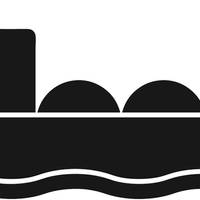
Without a radical new approach, BIMCO’s CII Operations Clause will remain a worthy but vain attempt to reconcile shipping’s environmental and commercial imperatives,Legal and contractual disputes lie ahead for shipping unless it finds a better compromise between owners and charterers to sustain the International Maritime Organization’s Carbon Intensity Index (CII).Entering into force on 1 January 2023, the CII relates primarily to the way in which ships are operated and the resulting CO2 emissions.
Managing Offshore Oil & Gas Through Energy Transition
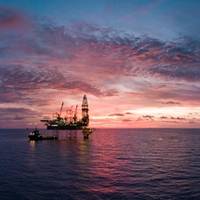
Scientists warn that climate change is the greatest peril that humankind has ever faced. Yet oil and gas exploration is set to clock the highest growth for more than a decade this year and next. Protesters cause disruption but, for the moment, hydrocarbon energy underpins life as we know it“Offshore oil and gas production probably matters now more than ever,” said Audun Martinsen. The Rystad Energy Partner and Head of Energy Research told Maritime Reporter & Engineering News.“It…
Take a Hyke: Swarm Tech for Ferries
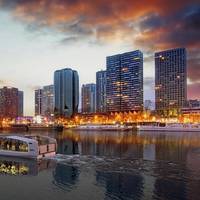
Apps, big data, tech, software and cutting-edge innovation were hallmarks at last year’s Sea Tech conference in Brest, France. During one session, for example, on electronic charting, the speakers made reference to “data as fuel.” For vessel operations, data was called a resource just like diesel or LNG or lithium batteries. The reference was usually to big data, i.e., almost boundless information flowing like a gusher from a firehose, the new force driving applications to set routing…
Molten Salt Reactors: Maritime’s Nuclear Option
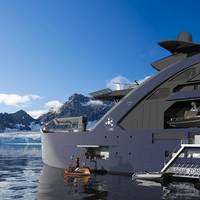
A race is being run by nuclear scientists and ship designers. The prize? “Decarbonization’s” holy grail — believed to be a “small” thorium-fueled, molten-salt rector’s unlimited power to propel sea trade. At the same time, a recently revived discussion among leading marine-nuclear thinkers revolves now around how to put an ultra-modern, as-yet non-existent marine reactor aboard a modern commercial vessel. As with nuclear power generally, shipborne reactors produce national discussion first, then discovery.
Glosten, ABB Debut Methanol-Hybrid Tug Design
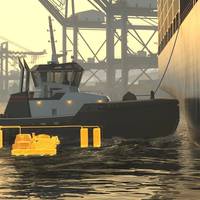
Glosten and ABB have teamed to develop a methanol-hybrid ship assist tug design. The "SA-100" is a 100-ft. ASD harbor tug—designed to measure under 100 grt—is propelled by two methanol compatible CAT 3512E gensets powering electrically driven L-drives. The gensets are complemented by battery banks for zero-emission operation when transiting, peak shaving during general operation, and as boost for achieving the tug’s peak bollard pull of 90 short tons.“We had three primary design objectives in developing this tug—all intended to benefit the owner/operator…
COSCO SHIPPING Lines Takes First Bunkering of Marine Biofuel
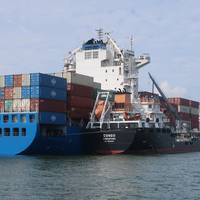
TotalEnergies Marine Fuels completed the first refuelling of a COSCO Shipping Lines containership with marine biofuel, marking TotalEnergies’ first biofuel bunkering operation for a containership in Singapore.On July 11, 2022, the 4,250 TEU COSCO Houston container vessel was bunkered with TotalEnergies-supplied biofuel in Singapore waters, via ship-to-ship transfer. VLSFO (Very Low Sulfur Fuel Oil) blended with 20% second-generation, waste-based and ISCC-certified UCOME (Used Cooking Oil Methyl Ester)…
Stena Line Reports 11% cut in Carbon Emissions
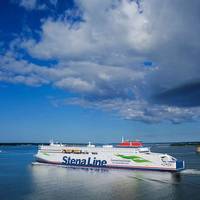
Stena Line says that it has decreased the carbon emissions by 11% per ton of cargo carried over each nautical mile, plus a reduction of 4% total ship emissions compared to pre-Covid operations. According to the company, the main contributor is the higher utilization of its fleet with cargo during the latest years. Also, during port operations and lay times, Stena Line says that it now uses 100% renewable electricity. The energy is used for shore power at 20% of Stena Line´s terminals while berthing…
Energy Efficiency Indices: What You Need to Know

Decarbonization is the greatest challenge facing the shipping industry today.The effort to reduce emissions and environmental impact extends to all sectors and players and will leave no one in the industry unaffected.The IMO’s effort to decarbonise shipping is a numbers game. The goal, as stipulated in the Initial IMO GHG Strategy, is to reduce the average CO2 emissions per transport work by at least 40% by 2030, compared to 2008 levels., and to pursue a 70% reduction by 2050.The introduction of the EEXI is part of the IMO’s latest attempt to achieve this goal.
Jurong Port, MHI and JERA Explore Plan to Build Ammonia Power Plant in Singapore

A consortium of Singapore and Japanese companies have signed an initial agreement to build a power plant fuelled only by ammonia in the city state.Singapore's Jurong Port, Mitsubishi Heavy Industries Asia Pacific (MHI-AP) and JERA plan to build the 60 megawatt (MW) gas turbine combined cycle plant on Singapore's Jurong Island, they said in a joint statement on Friday.Jurong Port and MHI-AP in August 2021 signed a memorandum of understanding (MoU) for a pre-feasibility study on ammonia direct combustion technology for green power generation which was concluded in March.The project aims to suppl
Battery-Electric Surge: ESS Scales Up in Maritime
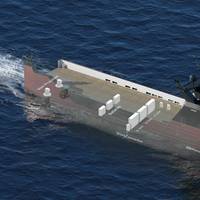
Ask the right government department in any G7 state and you’ll find funding to put battery power for your vessel. Beyond funds, new battery makers and system integrators are ironing out safety issues, and a growing number of giga-sized cell factories offer hope that costs will fall for marine energy storage, as ESS choice grows. Efforts are also underway to recycle rare earth elements and to augment or greenify staggeringly high plant electricity inputs. Apart from funding, the drivers of change include constraints on shipping in Emissions Free Areas like the fjords of Norway…
NYK to Modify Tugboat to Ammonia Fuel at Keihin Dock Co.
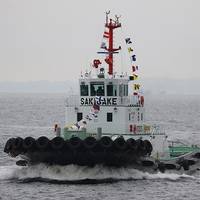
NYK finalized a contract with Keihin Dock Co., Ltd., an NYK Group company, to modify a tugboat to ammonia-fuel specifications. Sakigake, a tugboat currently fueled by liquefied natural gas (LNG) and operated in Tokyo Bay by NYK Group company Shin-Nippon Kaiyosha Corporation will be converted to operate on ammonia fuel by a target completion year of 2024.This R&D was initiated in October 2021 by NYK and IHI Power Systems Co., Ltd.
Marine Insurance: Climate Change Challenges for the Shipping Industry
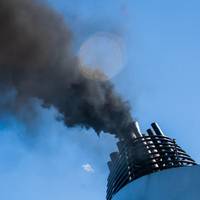
With 90% of global trade moved by sea, shipping is a major contributor to climate change. The International Maritime Organization (IMO) estimated that the industry’s greenhouse gas emissions grew by 10% between 2012 and 2018, while the industry’s share of global anthropogenic CO2 emissions grew slightly to almost 3%, about the same volume as Germany. It also forecasts that ‘business as usual’ could see emissions increase by up to 50% by 2050 due to the growth in shipping trade.The race to decarbonize shipping is now underway.
Ammonia Marine Fuel Study Gets $6.7 Million Grant
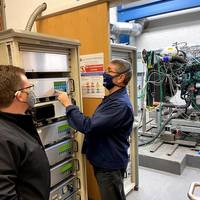
A group of academic and industrial partners were awarded a $6.7 million grant by the Engineering and Physical Sciences Research Council (EPSRC) to accelerate understanding, technologies and policies relating to the use of ammonia as a sustainable fuel. The project begins in June 2022 and will run for 5 years.Entitled Decarbonized Clean Marine: Green Ammonia Thermal Propulsion (MariNH3), the project brings together academics from Nottingham, Birmingham, Brighton, Cardiff and STFC…
BMT, Penguin Commission Hybrid-electric Vessel for Singapore MPA
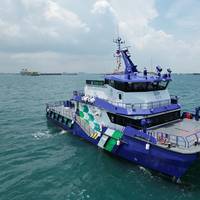
A hybrid vessel for the Maritime and Port Authority of Singapore (MPA), co-developed by BMT and Penguin Shipyard International, was recently commissioned.The hybrid-electric aluminium catamaran, dubbed MPA Guardian, is a 35-mpatrol boat designed to conduct patrolling activities, search and rescue, oil spill response, drone operations and salvage support. It will also be used as the government’s test bed for new technologies and equipment.With accommodation for up to 24 people and a state-of-the-art wheelhouse…
New Product: Saft’s newSeanergy 2.0 Li-ion Battery
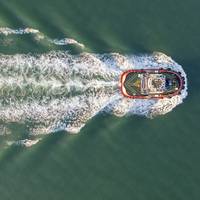
Saft, a subsidiary of TotalEnergies, launched Seanergy 2.0, a new lithium-ion (Li-ion) battery system for full-electric and hybrid vessels. The system can be scaled to suit propulsion and other loads on board vessels including ferries, workboats and tugs, offshore support vessels, cruise liners and yachts.Seanergy 2.0 has high energy density of 130 watt-hours per liter (Wh/l), a compact solution for even the most restricted onboard spaces. Ship integrators can use individual modules to build large-scale battery systems up to 1…
Echandia Battery System for Green City Ferries' Catamaran
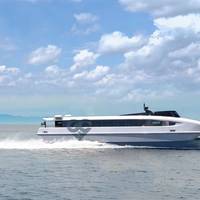
Echandia booked a second order from Green City Ferries AB as it expands its waterborne public transport in Stockholm with another zero-emission, high-speed, carbon fiber catamaran Beluga24. Late last year, Echandia announced its first order for a fuel cell energy solution to power the first Beluga24 vessel from Green City Ferries. The new order for the battery vessel with its 730-kWh installation, is optimized for high-speed commuting with charging points on both ends of the route.
Equinor Joins the Mærsk Mc-Kinney Møller Center for Zero Carbon Shipping
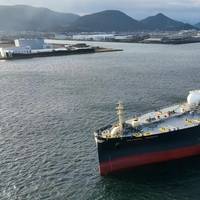
The Mærsk Mc-Kinney Møller Center for Zero Carbon Shipping continues to grow in size and influence, with Equinor joining as a Strategic Partner.Equinor is both a producer and a supplier of fuel to the maritime sector and has worked systematically on reducing its carbon intensity by developing new types of vessels and using alternative fuels.“This partnership has huge potential," said Bo Cerup-Simonsen, CEO of the center. "As a major producer of maritime fuels and maritime player…
Power Play: Volvo Penta IMO Tier III Range Expands
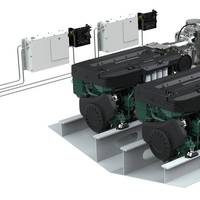
Volvo Penta has expanded its marine IMO Tier III range with new D13 solutions.This expands the range of marine commercial Volvo Penta D13 IMO III solutions for IPS-1200, IPS-1350, D13-900, and D13-1000. Each package exceeds the IMO III standards.The Volvo Penta D13 IMO III package upgrade boasts a power output of up to 735 kW for inboard and auxiliary applications and is approved for E3 and C1 cycles. The reduction in NOx and hydrocarbon (HC) will decrease from currently permitted…
2050 Not Achievable Without Carbon Capture, says ABS' Wiernicki

“Carbon capture is going to be a key transformational technology for shipping to achieve net zero emissions by 2050. It will be critical to addressing the challenge before us, which is the sheer gradient of the curve. At the moment we can only see the outline of a solution to get us to 2050. But it is clear already that net zero cannot realistically be delivered without efficient carbon capture and storage technology,” said Christopher J. Wiernicki, ABS Chairman, President and CEO…
Tech Feature: Next-Generation Maritime Electrical Solutions Today
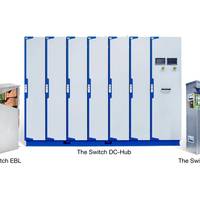
Asbjørn Halsebakke of Yaskawa Environmental Energy/The Switch discusses the application in maritime for the company’s new generation DC-Hub with its unique Electronic DC Breaker (EDCB) and Electronic Bus Link (EBL).Your company is starting to talk about its new generation DC-Hub. Can you give an overview of this product evolution with insight on what makes it unique?I think one of the key features with maritime products and with DC-Hub is that you need to think first about personal safety. You need to think about how to make sure that everything is in a safe mode.
NYK to Build Its Third LPG Dual-Fuel Very Large LPG / NH3 Carrier
NYK ordered f its third liquefied petroleum gas (LPG) dual-fuel very large LPG / liquefied ammonia gas (NH3) carrier (VLGC) from Kawasaki Heavy Industries Ltd. The ship will be built at the KHI Sakaide Works shipyard and is set for delivery in 2024.Like our first two ordered LPG dual-fuel very large LPG / NH3 carriers, the vessel will be equipped with separate cargo tanks designed to carry LPG and ammonia at the same time to flexibly respond to various trade patterns.In addition to the LPG dual-fuel engine, the ship will have a shaft generator that can generate electricity during the voyage by using the rotation of the shaft that connects the main engine to the propeller.
Artemis' Electric Foiling Workboat Prototype Takes to the Sea
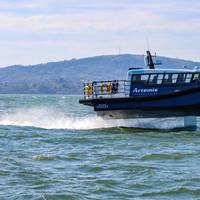
Artemis Technologies released the first pictures of its 100% electric, high-speed foiling workboat prototype on Belfast Lough. The vessel was designed and built to include the production specification drivetrain, battery and flight control components consumers will eventually see in the finished workboat.The 11.5-m vessel named “Pioneer of Belfast” is powered by the Artemis eFoiler system, designed to enable the prototype to fly over the water, using "significantly less energy than a conventional workboat" according to the developer, with high-speed re-charging technology also developed.
Carnival, Wärtsilä Cooperate on Fleet Decarb Program
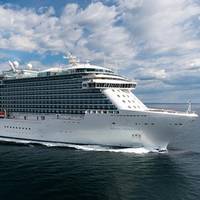
Wärtsilä will deliver its new Decarbonization Modelling Service to Carnival Corporation as the cruise group aims to reduce greenhouse gas emissions across its fleet.Initially tasked with establishing an optimal decarbonization path for the cruise ship Regal Princess, the project will expand to model solutions which could be applied to the entire Carnival fleet. The contract was signed in December 2021 and the project commenced in February 2022.Under the program, a digital model of Regal Princess will be created by combining operational data from several different sources.





